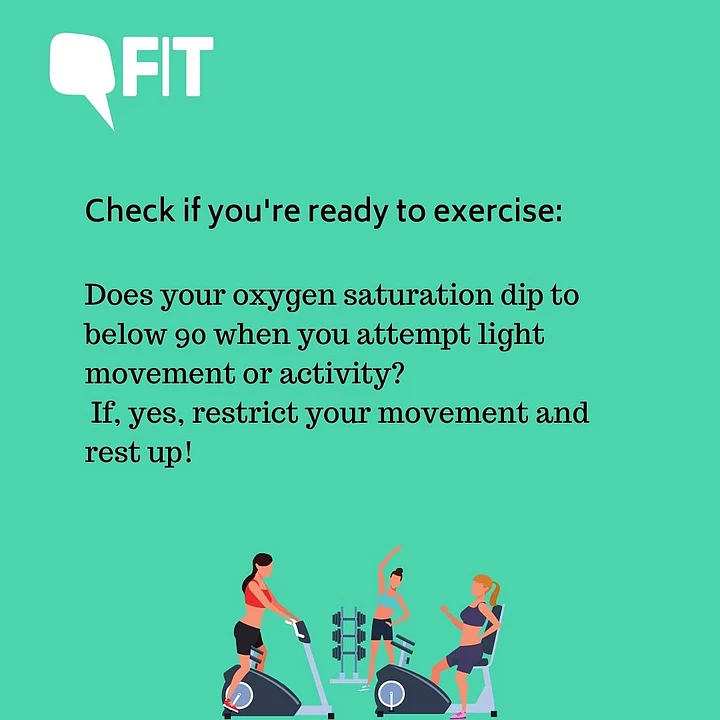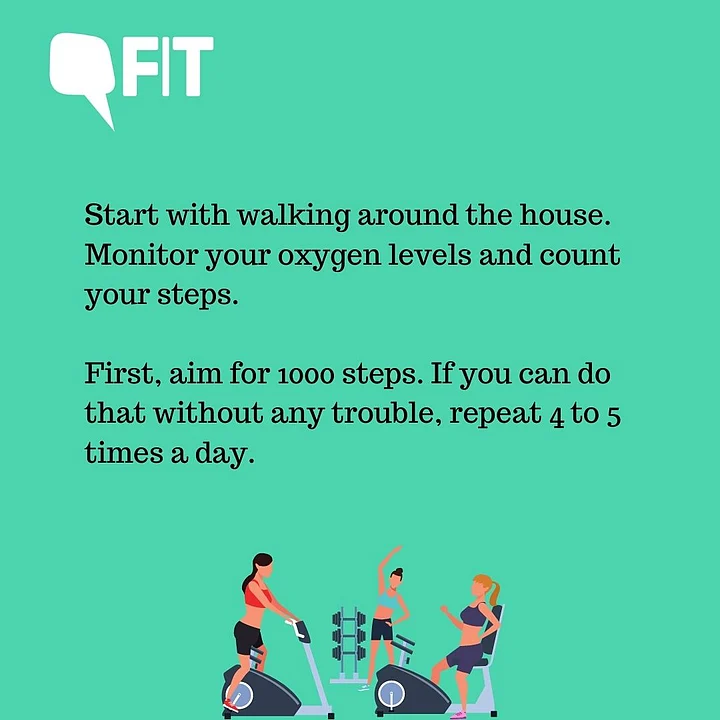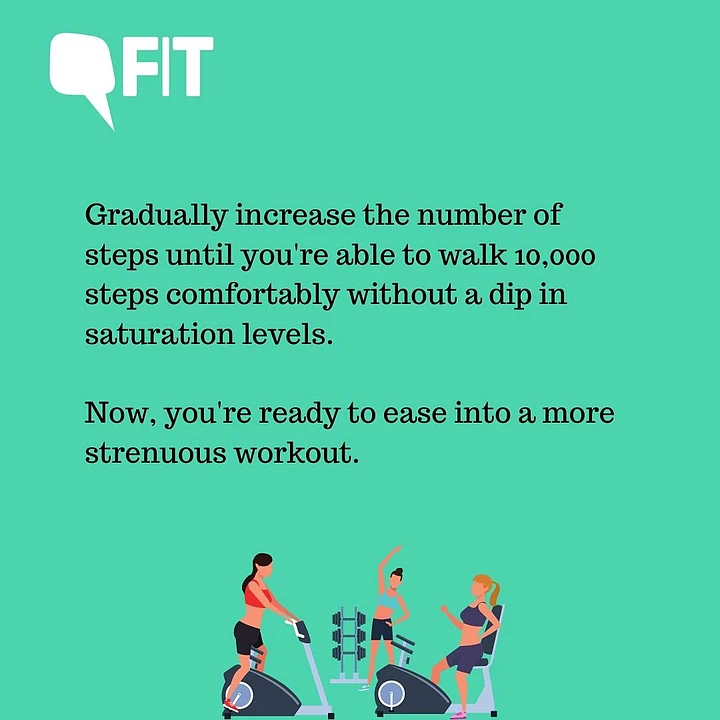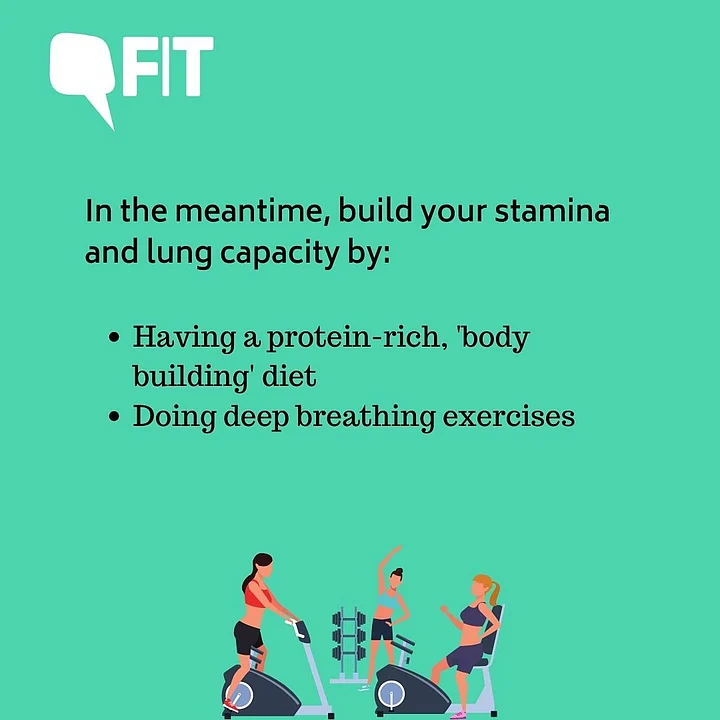As the second wave of COVID-19 ravaged the country, it took down with it the healthiest of us.
It was no longer the illness of the old and frail, but that which brought the young and active to their knees.
Fighting COVID can be a gruelling task and the itch to get back to your old self is understandable.
But in wanting to spring back to life, many may not realise that their bodies aren't the same as what they used to be before COVID, and end up overexerting themselves.
How soon is too soon to get back to working out? What are some things one must be mindful of when exercising?
FIT speaks to Dr Arvind Kumar, Chairman, Institute of Chest Surgery, Medanta Hospital and Dr Ravishankaran, Associate Professor- Physical Medicine and Rehabilitation, Amrita Hospitals.
3 Months of No Exercise?

It's been said that one mustn't exercise or workout for 3 months after COVID recovery. Is this true?
To put is simply, no.
But also, yes.
There is really no hard and fast rule about how long you have to refrain from exercising after recovery.
"Three months is for worst of COVID cases, the ones who have nerve damage, lung damage, and heart damage," says Dr Ravishankaran, Associate Professor- Physical Medicine and Rehablitiation, Amrita Hospitals.
Both Dr Ravishankaran and Dr Arvind Kumar recommend getting out of bed and resuming light activity if you're able to.
“Anybody can do exercise depending on their capacity, but it's important to find out what your base line is.”Dr Ravishankaran, Associate Professor- Physical Medicine and Rehablitiation, Amrita Hospitals
Slow and Steady
"If you're able to get out of bed, you shouldn't be bed bound," says Dr Ravishankaran. "It's important to move around and do your daily activities, this is a kind of exercise on its own. From here you can gradually build up."
'Gradually' being the operative word.
“When we speak of ‘real’ exercise where your heart rate is raised beyond 90 and for longer than 30 minutes, you do have to wait for some time before you go for that.”Dr Ravishankaran


How does a person, then, know when they're ready to exercise?
Dr Ravishankaran advises starting slow and monitoring your progress.
"The easiest and the first thing you can start with is to get up and walk around the house. Keep your smartphone or watch with you to count your steps."
Adding to this, Dr Kumar emphasises on the need to monitor your oxygen levels at all times while doing any activity.
First, aim for a 1000 steps, advices Dr Ravishankaran. If you're not able to, without difficulty, and if you don't have any trouble breathing, bring it down to 500 or 750 steps.
Attempt to do 4 to 5 sessions of this during the day with gaps in between.
“The goal is to do 10000 steps a day, and that’s a little hard. But when they’re able to do that many steps in a day without any trouble, they can start attempting other exercise like jogging, running, or lifting weights.”Dr Ravishankaran


(Photo: FIT)
Monitor Your Oxygen Levels at All Times
The most important thing that you must remember, that a lot of people neglect, according to Dr Kumar, is monitoring your oxygen saturation levels while doing any activity.
Dr Kumar speaks of 2 broad categories of COVID recovered patients, those whose oxygen saturation levels are normal at rest, and those whose saturation levels are normal at rest and also while doing activity.
“Just because your oxygen saturation levels are normal at rest doesn’t mean you should jump into doing exercise.”Dr Arvind Kumar
Dr Kumar also adds that those who were admitted to ICUs and may have been on ventilator or oxygen support will need to be more mindful of this.
“If you your oxygen saturation dips with activity, you may need to continue with oxygen support even for light exercises like walking around the house or cleaning. Building back your stamina and lung power from this point could take around 6 to 8 weeks normally.”Dr Arvind Kumar
If you fall in the second category though, where you haven't been on oxygen support and your saturation levels are normal even with activity, Dr Kumar advises focusing on building your stamina with gradual exercise.
Building Your Stamina

In a previous article, FIT spoke about how having a protein rich diet and certain deep breathing exercises can help build back lost strength.
Speaking to FIT for yet another article, Doctors have spoken about how deep breathing exercises can help.
“We advocate breathing techniques for all our respiratory patients. Even all our Yoga techniques are useful for maintaining lung health," said Dr Nimish Shah, Consultant Respiratory Medicine at Jaslok Hospital and Research Centre.
Some effective breathing exercises recommended by the All India Institute of Physical Medicine and Rehabilitation (AIIPMR) include,
Controlled breathing
Spirometry
Pursed lips breathing
Segmented breathing
(At The Quint, we are answerable only to our audience. Play an active role in shaping our journalism by becoming a member. Because the truth is worth it.)
